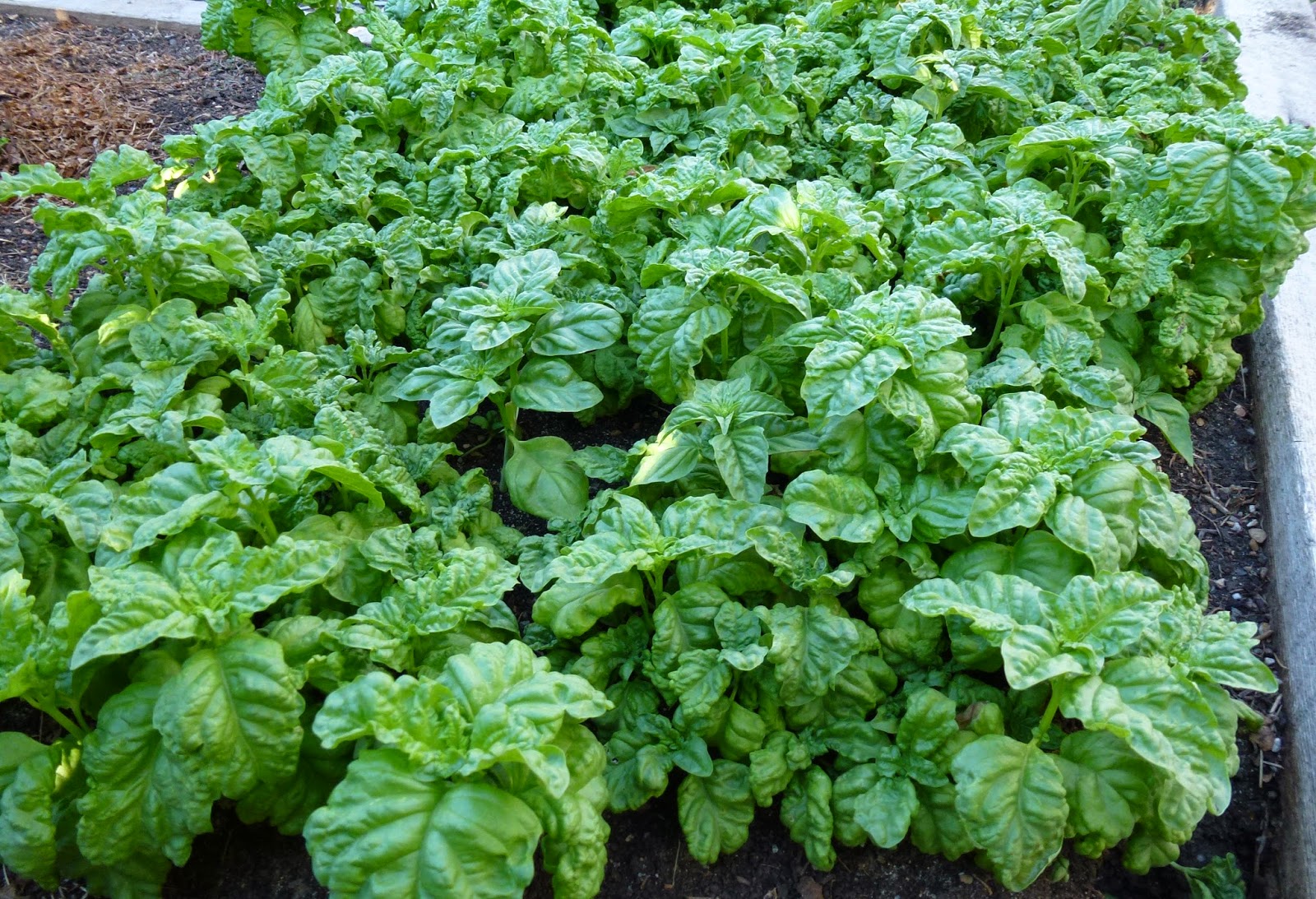 | |||
| Assortment of Basil Varieties in Containers |
There are over 160 varieties of basil. Pick your favorites (or what seeds are left on the garden shelf). The purple leaves of ‘Dark Opal’ or ‘Red Rubin’ are a wonderful contrast to the usual green varieties, they taste great and add a pop of color to green salads. 'Purple Ruffles' produce large leaves making them a pretty culinary garnish or a very attractive plant in containers or beds.
Try the large leaf varieties 'Italian Large Leaf' or 'Napoletano' to use in place of lettuce in sandwiches. They are large enough to use for wrapping pieces of chicken or fish before grilling (outstanding yum).
 |
| 'Napoletano' Large Leaf Basil |
Scented basils add a unique flavor to dishes and can be used to make jams, jellies and vinegars and teas. They include lemon, lime, cinnamon, and licorice basil. 'Sweet Thai' is served as a condiment in Thai and Vietnamese dishes. Basil leaves are used for seasoning many Italian dishes and are the main ingredient of pesto sauce. Use the traditional 'Genovese' variety for authentic pesto flavor.
 | ||
| 'Red Rubin' Basil and Golden Sage |
Basil prefers well-drained, amended soil. Keep the seedbed moist during germination, and watered throughout the growing season, the soil can dry a bit between waterings. Basil prefers full sun with late afternoon shade. Do not fertilize basil unless the soil is very depleted of nutrients, it will have better flavor if not fertilized.
Pinch off flower spikes as they form. This will maintain basil’s full flavor. Harvest leaves regularly during the growing season. Cut or pinch directly above a set of leaves so the plant becomes bushier. Start harvesting early, at the four leaf stage - younger leaves taste the best, especially when tossing into salad.
 | |
| Cut or pinch leaves directly above a set of leaves |
Basil leaves can be preserved by freezing or drying. Remove leaves from stems, then rinse, then dry with a salad spinner. Toss leaves (not stems) in a food processor with oil. Chop well, add more oil if needed, the mixture shouldn't be dry but not too oily. Freeze in small containers. For quicker processing, rub olive oil on leaves first then place in ice cube trays or bags. Dry plants by hanging them upside down in a dry area. Crumble leaves and place in an airtight container to use all year. Dried leaves don't taste nearly as good as fresh or frozen, but they are better than dried store bought.
Although not university research-based, companion planting with basil is said to repel insects such as aphids, mites, tomato hornworms and asparagus beetles. Whether true or not, basil looks great inter-planted throughout the entire garden. Basil is vulnerable to slugs, whitefly, red spider mites and Japanese beetles. Fusarium wilt, a fungus can attack plants leaving them yellow, stunted with discolored stems. Rotate where basil is planted each year and look for resistant varieties.
To end a stressful day, steep one-teaspoon dried leaves with one cup of boiling water. It’s good for the digestive system but even better to boost your outlook!












0 komentar: